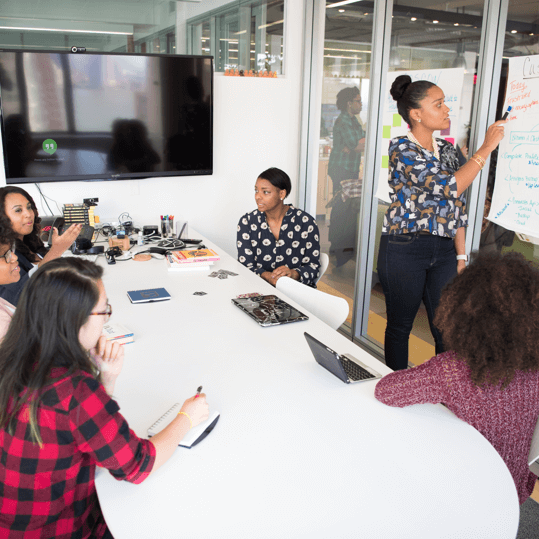
Top 3 Workplace Trends that Will Inspire Interior Fit Outs of the Future
- Reading Time: 7 minutes
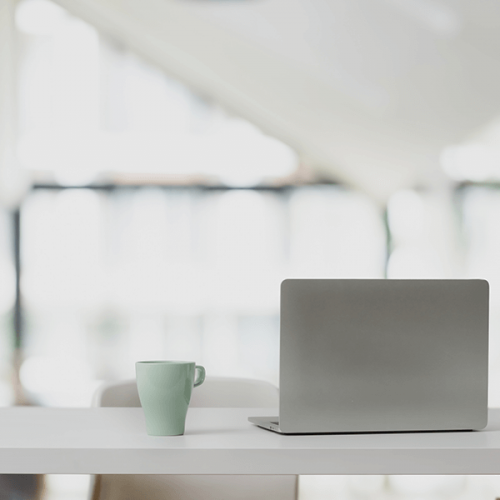
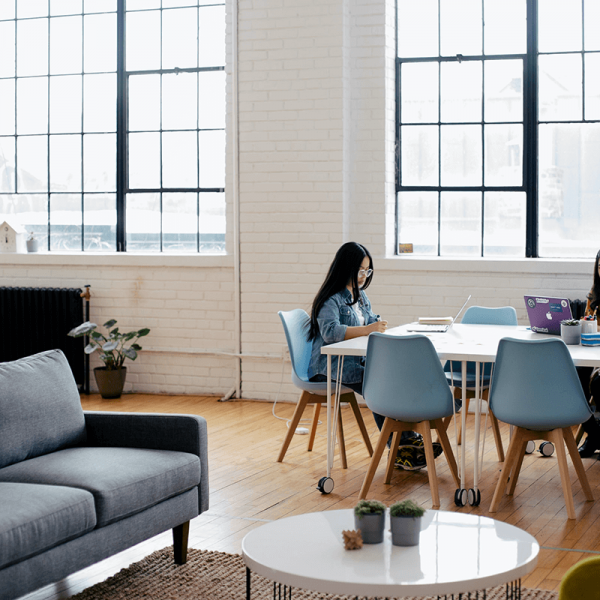
3 Workplace Trends That Will Inspire Interior Fit Out Styles of the Future
Without a doubt, workplaces and commercial interior fit outs of the past were vastly different to how they are today. For those who may have forgotten, let us paint you a picture…
Imagine a sea of cubicles with individual workers diligently doing their work individually in their own tiny office. Office equipment covered most of the desk space. We’re talking landline phones ringing, faxes and typewriters. And an often windowless room in the back is allocated as a break room for staff lunch breaks alongside a shared printer and copious amounts of office supplies.
Collaboration in the past often meant gossiping around the water cooler and if these offices were to be described in just a few words, they would be boring but functional.
Fortunately, workplaces have come a long way since the ‘70s. And without a doubt technology has been leading the way towards the modern offices we have today. (Who remembers what we actually did with all our time pre-1990 before the internet was created? We can’t remember either!)
As technology continues to evolve, along with our lifestyle trends, our workspaces will continue to adapt and change. However, we believe these top 3 modern workplace trends will be around for a while yet and will play a large part in how we design our interior fit outs going forward.
1. Interior Fit Out’s Providing Flexible Workspaces
Flexibility is a design style we are incorporating more and more into modern workspaces, and we don’t see this trend going away anytime soon. If anything, our spaces are becoming increasingly flexible and adaptable to our rapidly changing work requirements.
We have far more data, statistics and studies than ever before on how workplaces can better accommodate workers to promote optimal performance and productivity. And this knowledge is allowing for far better design within our interior commercial fit outs.
Instead of specific rooms dedicated to one task only, we have spaces that can be easily adapted to suit a multitude of tasks. For example, the large and often empty boardrooms are making way for smaller meeting spaces that can also transition into project rooms, temporary offices and even recording studios for videos and podcasts.
Workstations are also becoming more functional with easily movable furniture and a mix of sit and standing desks becoming the norm in the workplace.
When we think about hospitality spaces, there is an increasing trend to provide working areas within our coffee shops and cafes that have easy access to power sources and good quality Wi-Fi.
How we work now and how we will work going forward is changing rapidly and our workspaces need to be flexible enough to keep up.
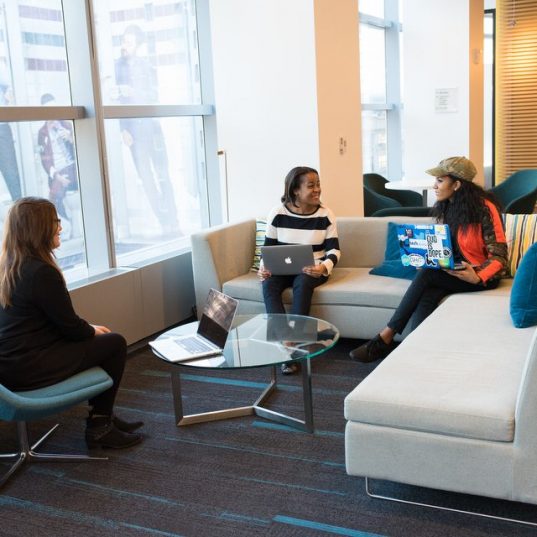
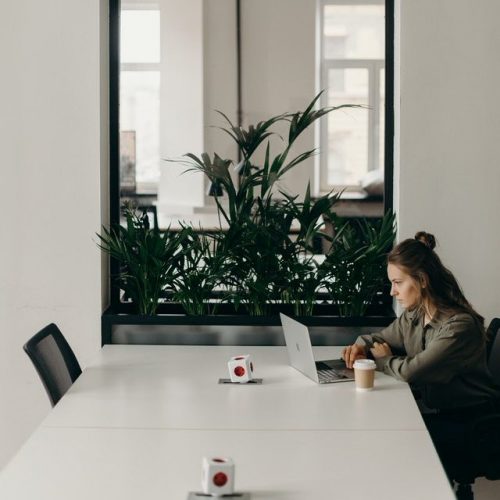
2. Greater Focus on Work-Life Balance
Thanks, again, to modern technology, never before has there been a greater emphasis on work-life balance with growing numbers of employees seeking out roles that will give them flexibility. Gone are the days where we are chained to our desk for a rigid 9 to 5 day… Well, they haven’t quite gone yet, but we don’t think it’ll be too far off that set working hours and locations will be a thing of the past.
With online tools, software and cloud storage available, we can work from just about anywhere; collaborate even though we are literally worlds apart; and keep our files and data up-to-date even though multiple people are working on them from multiple locations.
This means workers can now work from home while watching their kids, or taking time during the day to attend doctors’ appointments, or go for a sneaky surf, and catch up on work at another time that suits them.
Deloitte found that millennials, in particular, are more drawn towards roles that offer greater work-life balance opportunities. So if businesses want to attract younger talent, a higher degree of flexibility in the role is required.
From an interior fit out perspective, this means, business owners can rethink how the workplace is used and look for ways they can reduce their running costs while their employees work from home.
Finding ways to bring a more relaxed, home-like environment into the office also helps to promote a healthy work-life balance. Green walls, cafe-style break areas, games rooms, pockets of space with comfy chairs where workers can relax and chat, along with better storage for personal and lifestyle items, such as bicycles, are just a few ways in which workplaces can bring a work-life balance into their space.
3. Adaptable Workforce
Flexibility within the workplace is gradually shifting and becoming gradually more common to the point that our workforce is changing entirely. This is something that will continue to be more prominent, and again, it’s driven by technology and the ease in which businesses can run their operations entirely online.
With this in mind, it makes sense that business owners are now shifting their thinking from hiring people for fixed positions and opting for flexible and adaptable roles that include freelancers. A current Intuit study indicates that 40 percent of our workforce is now made up of freelancers, and we feel this trend is only going to increase in the future.
Freelancing, also known as the ‘gig economy’ has a strong appeal for employers who find that operating as a freelancer allows for greater efficiency within their business without the extra burden of administrative and employment costs of hiring someone in-house.
And, thanks to online service providers such as Upwork and Fiverr, it’s never been so easy to find the right person to fulfil your requirements. Whether it’s accounting, graphic design, sales or customer service, you can draw from a talent pool from anywhere in the world.
Freelancing also holds a big appeal for workers as well who have the flexibility to work where and when they like, choose the jobs they are suited to and have variety in their work. It’s a win-win for all parties.
What does this mean for office fit outs and commercial workspaces? It means that businesses should again be catering for flexibility within their design. They may have an ever-changing mix of employees and freelancers working either in the office, or off-site.
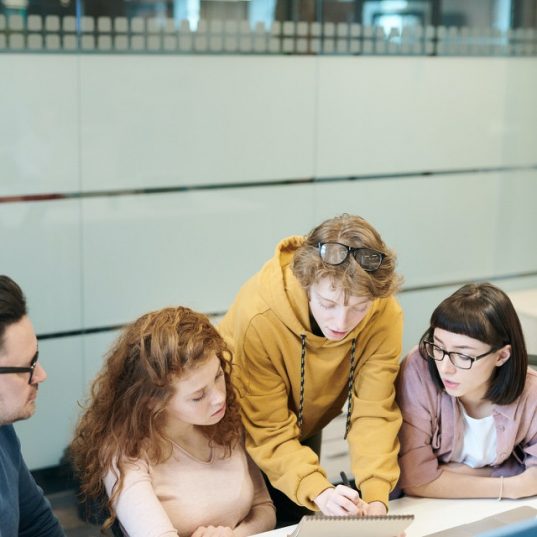
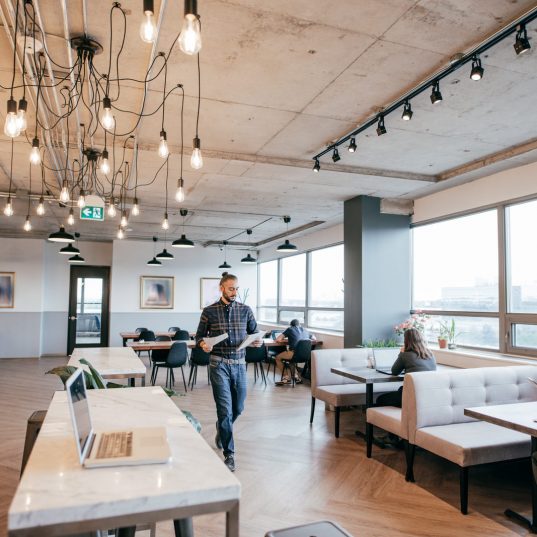
With these three trends in mind, I think we can all agree that the words to describe a modern workplace of the future is flexible and adaptable.
What do you think? Do you think our workplaces will change drastically in the future? Get in touch and let’s talk about how we can future proof your next commercial interior fit out.
